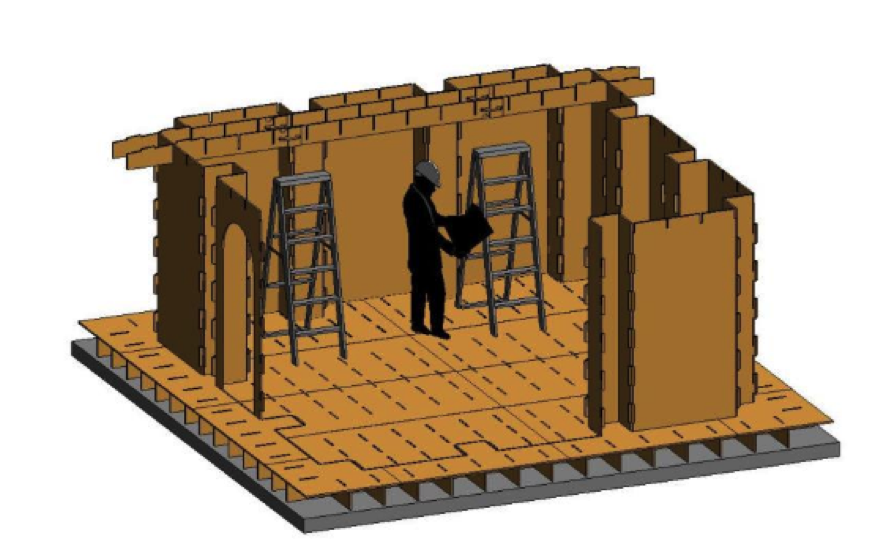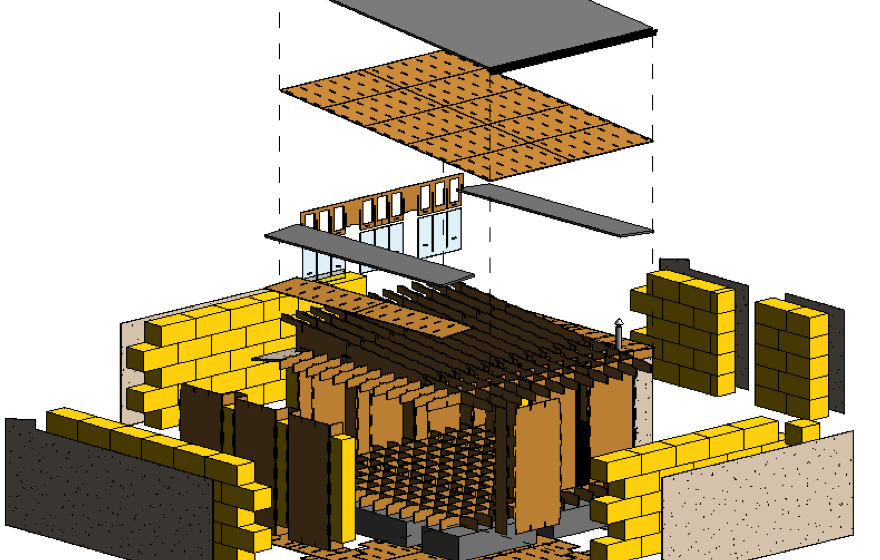Multiplex is collaborating with the Department of Civil, Environmental & Geomatic Engineering at UCL to incorporate a BIM project into the curriculum for its second-year civil engineering students.
It gives students practical, first-hand experience of the digital construction techniques used in construction and equips them with the skills they need for the modern job market.
The collaboration began pre-covid in 2019, when UCL lecturer in civil engineering design James Ford asked Multiplex head of digital Tom Loader to partner on a digital construction project for their design and professional skills module.
We want to prepare students for the workplace by mimicking professional practice as closely as possible, which is why the collaboration with Multiplex is so important.– James Ford, UCL
Ford said: “We were aware that there wasn’t a lot of digital engineering on our course, or much about BIM. This project fills that gap by giving the students hands-on experience of digital construction and the role of data in engineering. We want to prepare students for the workplace by mimicking professional practice as closely as possible, which is why the collaboration with Multiplex is so important. The industry is changing quickly and to have industry expertise from people who are working with these technologies day in and day out is really beneficial.”
The project focuses specifically on information and data. The delivery consists of 12 different presentations covering the basics of BIM as a process, training on authoring tools, and in-depth explanations of what is typically required and how it benefits live BIM projects. It also includes workshops where students can discuss their work and ask questions. Everything is based around the BIM process, keeping the model at the centre of all communications and information management for the project deliverables.
Populating the model
The 3D model the students are working with is based on a refugee camp emergency shelter that has been designed by UCL engineering graduate Sophie Collier. The base digital model is created by Multiplex in the relevant authoring tool and the students are tasked with populating it with required information (in relevant formats) for three main stakeholders – the designer, the builder and the client. Examples include a fully justified specification of materials, information on logistics and health and safety risks, a construction sequence, and handover information.
The aim is to develop their understanding of what types of information each party needs on a project and how BIM can help with its management and communication.
A key aspect of the shelter’s design is that it is intended to be built by refugees with no special tools required, which aids the communication process by forcing students to think about communicating with non-construction professionals.

Working in the digital model allows students to identify and visualise potential safety risks.
At the end of the project the students submit a report with appendices, their model file, and present their completed work with justifications and workings to a team made up of UCL, Multiplex, and other engineering professionals, including the former UCL student who designed the shelter.
Multiplex digital manager Tim Kay, who developed much of the delivery material, said one of the major benefits to students is learning to use BIM as a tool for information management and delivery: “A lot of courses don’t focus on this aspect. You learn how to make a model, but not about the information that goes into it and how this information can benefit people not typically within the current BIM profession.
We wanted to bring something to UCL that teaches the specific skills required in the industry today so these students can slot into the existing market.– Tom Loader, Multiplex
“Our focus is not on building the digital model, but the true-to-life application of the model and the information it contains. The students also see live examples from major construction projects we are delivering, like the Broadway [mixed-use scheme in central London] so they can see how BIM is actually being used in a professional environment. It’s about real world application rather than theory.”
Ford said: “We didn’t want the students to spend weeks building a model, we wanted them to learn how to use it – storing information and sharing information. The focus is getting them to think about who the information is for and how to use the model as a tool to communicate with the different people and skillsets involved in building a major project.”
This approach supports one of the key goals of the course, which is to teach students the practical digital design and construction skills they will need to work in today’s construction industry. The skills being taught are the skills graduates need to work on Multiplex projects and already form a specific part of the Multiplex graduate programme.
Loader said: “Digital construction is one of the most significant ways that the construction industry will evolve for the better. We have already committed to making every Multiplex project in the UK ‘model first’ and this is proving hugely beneficial to project delivery, so we need recruits with the appropriate skills to work this way.
“We expect our graduates to be comfortable working in a model environment, and to work naturally with data to form opinions on different aspects of a project, so the skills in this course are very representative of the skills we want graduates to have when we take them on. We only accept 12 to 18 graduates a year from more than 2,000 applicants, so we want them to be high-calibre people. We wanted to bring something to UCL that teaches the specific skills required in the industry today so these students can slot into the existing market.”

The digital model allows students to visualise the construction sequence. Model elements had particular information requirements that had to be issued to relevant parties in applicable formats.
The new project was launched at the beginning of February, with a final presentation at the end of April. The original plan was to get students onsite to introduce them to industry professionals and let them see first-hand how BIM is used in different job roles, but covid restrictions prevented this. There are plans for site visits when the module is run again next year, however, and Multiplex and UCL are also looking at collaborating on research projects to further develop the relationship and share knowledge and learning opportunities.
Students’ feedback
Feedback from the students following completion of the project has been very positive, with comments including: “BIM has helped us to look at all aspects of the design and to figure out more stuff in the same amount of time,” and, “Doing it this way [REVIT model] means you can see what you think might be a risk to the workers more easily.”
The consistent and high-grade work from students has shown that the message was clear and they understood the objectives. Following some of the impressive work produced, Multiplex is now planning to take on two students for summer placements to further develop their skills.
Ford said: “The project has been hugely successful and one of the main benefits has been developing the students’ awareness of the many benefits of BIM and digital engineering tools on a complex engineering project. The students enjoyed working with the model and it generated a lot of interest in BIM.
“Multiplex were fantastic partners on the project, providing the necessary industry expertise, and equipping these students with valuable digital skills for today’s job market. We look forward to continue working with Multiplex and delivering the project again next year.”















